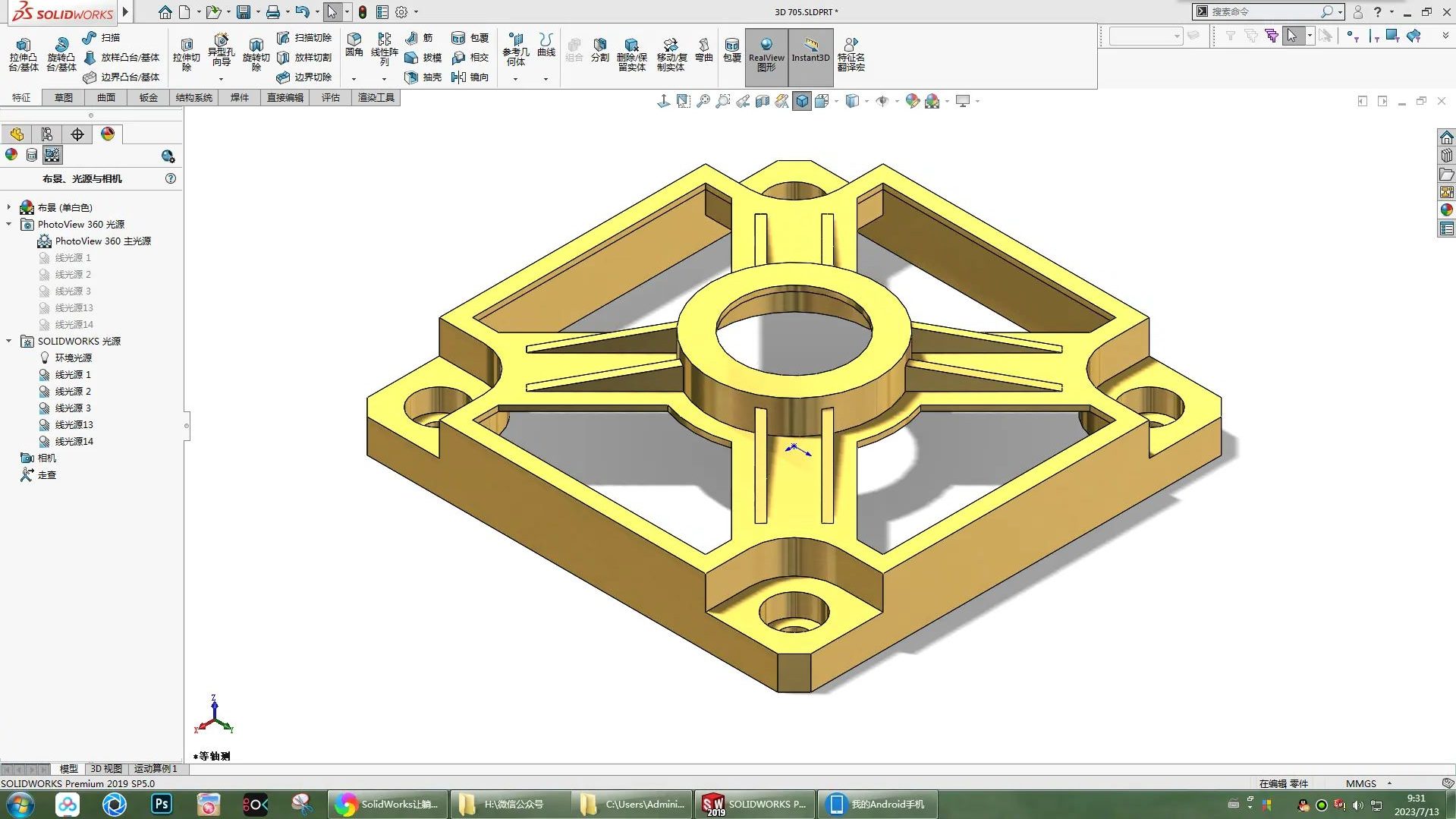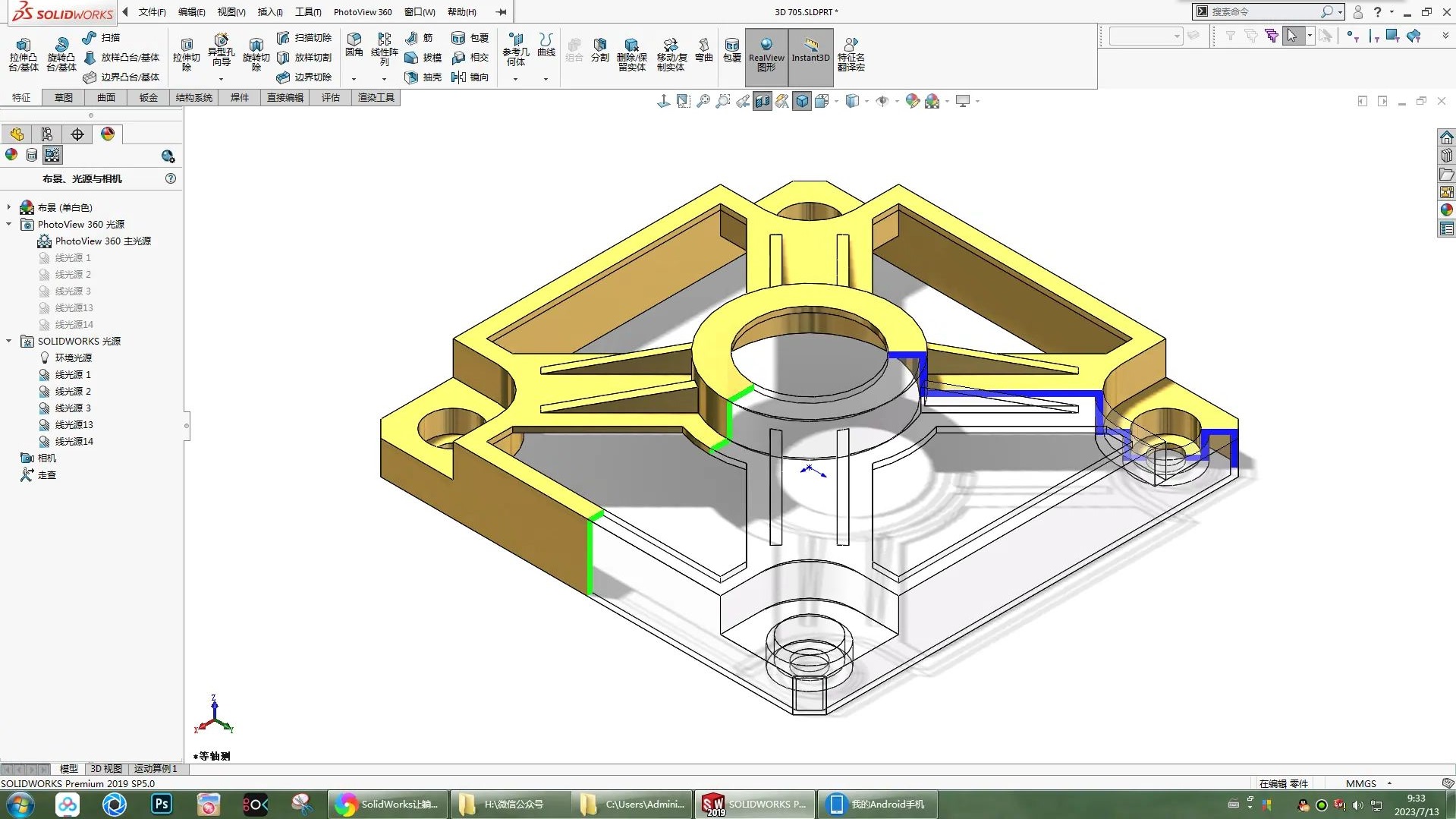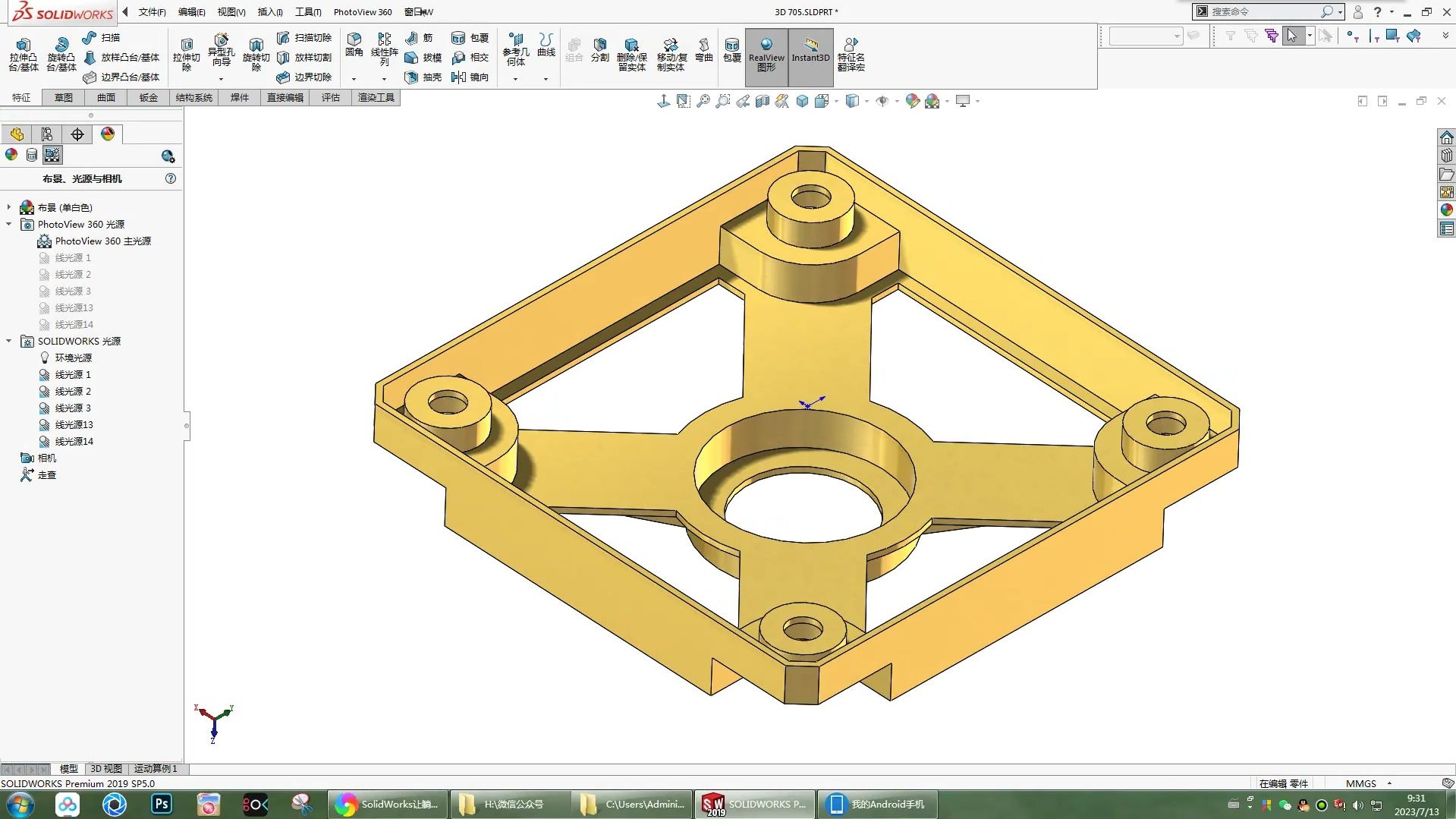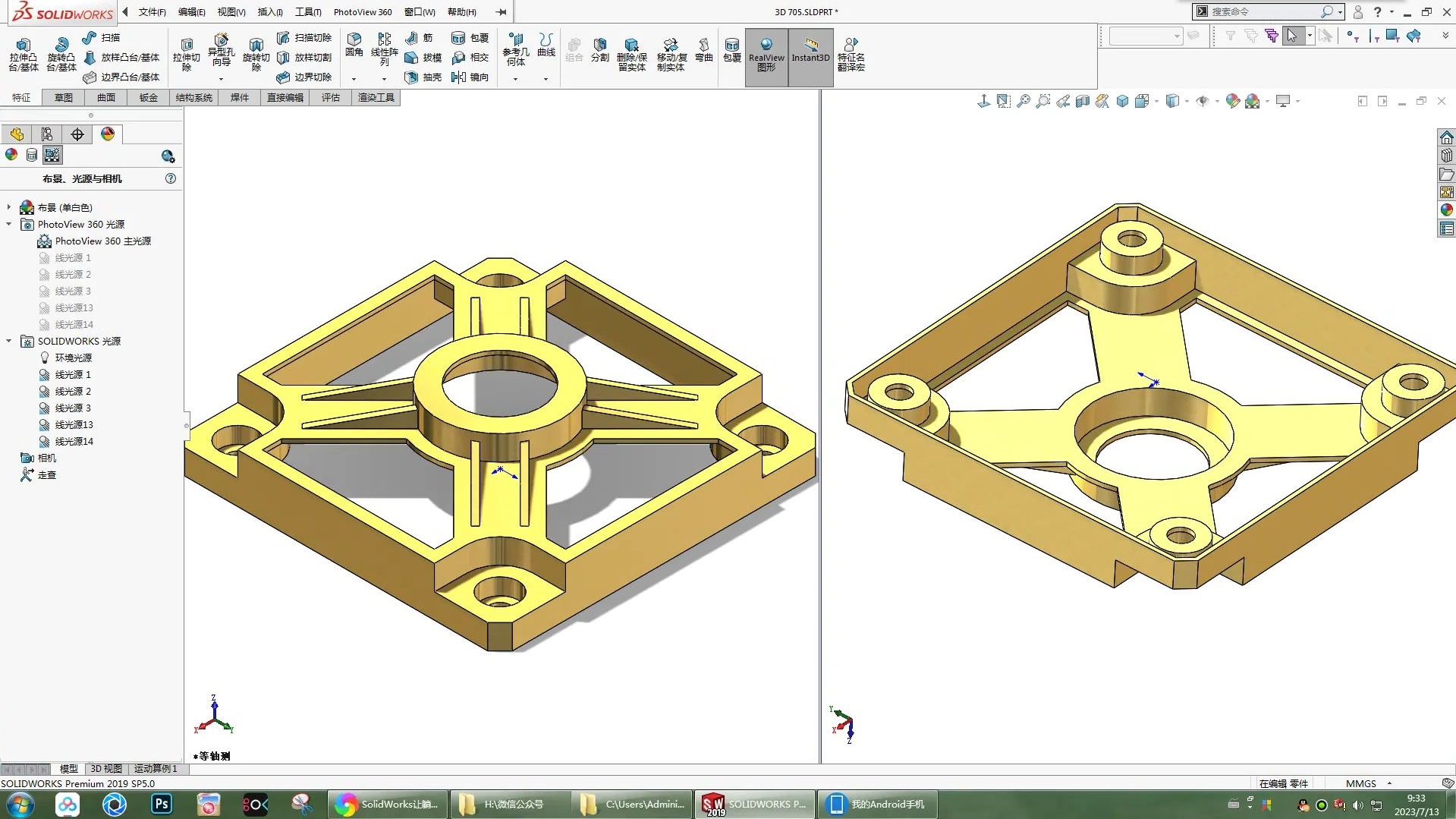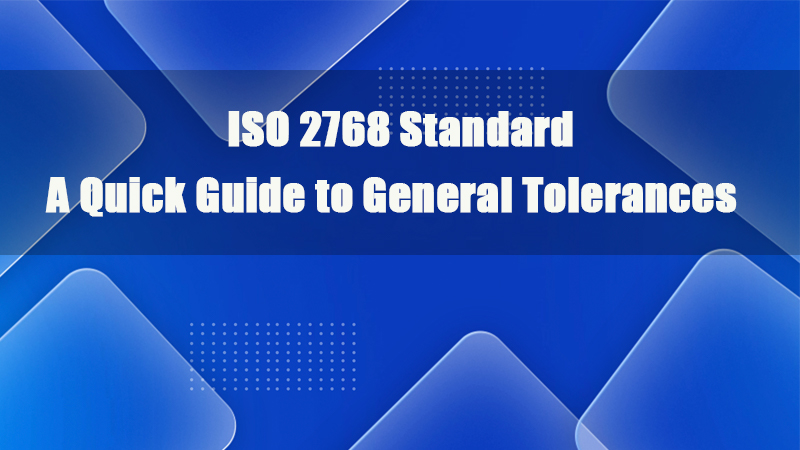
- 1.0¿Qué es ISO 2768?
- 1.1Una descripción general completa de la norma y sus aplicaciones
- 1.2Dimensiones lineales vs. angulares
- 1.3Estructura y clasificación
- 1.4Grados de tolerancia
- 1.5Por qué es importante la norma ISO 2768
- 1.6Consideraciones sobre la rugosidad de la superficie
- 1.7Tolerancias de ejemplo para piezas de metal mecanizadas por CNC
- 2.0El propósito y la importancia de la norma ISO 2768
- 3.0ISO 2768-1: Tolerancias generales para dimensiones lineales y angulares
- 4.0ISO 2768-2: Tolerancias geométricas generales
- 5.0Descargar Normas Oficiales de Tolerancia ISO 2768:
- 6.0Resumen
- 7.0Preguntas frecuentes sobre la norma ISO 2768
1.0¿Qué es ISO 2768?
1.1Una descripción general completa de la norma y sus aplicaciones
La norma ISO 2768 no es una simple norma más: es un marco reconocido mundialmente para las tolerancias generales de dimensiones lineales y angulares. Proporciona una especificación unificada para las tolerancias dimensionales en la fabricación, garantizando la calidad y la consistencia del producto en toda la producción.
1.2Dimensiones lineales vs. angulares
Dimensiones lineales se refiere a medidas como largo, ancho y alto.
Dimensiones angulares involucran ángulos, como la curvatura de una lámina de metal o la inclinación de un componente mecánico.
La precisión en estas dimensiones es crucial. Incluso la más mínima desviación puede provocar un mal funcionamiento o riesgos de seguridad. La norma ISO 2768 define los rangos de tolerancia aceptables para garantizar que las piezas funcionen correctamente.
Por ejemplo, a un componente diseñado con una longitud de 100 mm se le podría permitir variar entre 99,95 mm y 100,05 mm según la norma ISO 2768, manteniendo así tanto la seguridad como la funcionalidad.
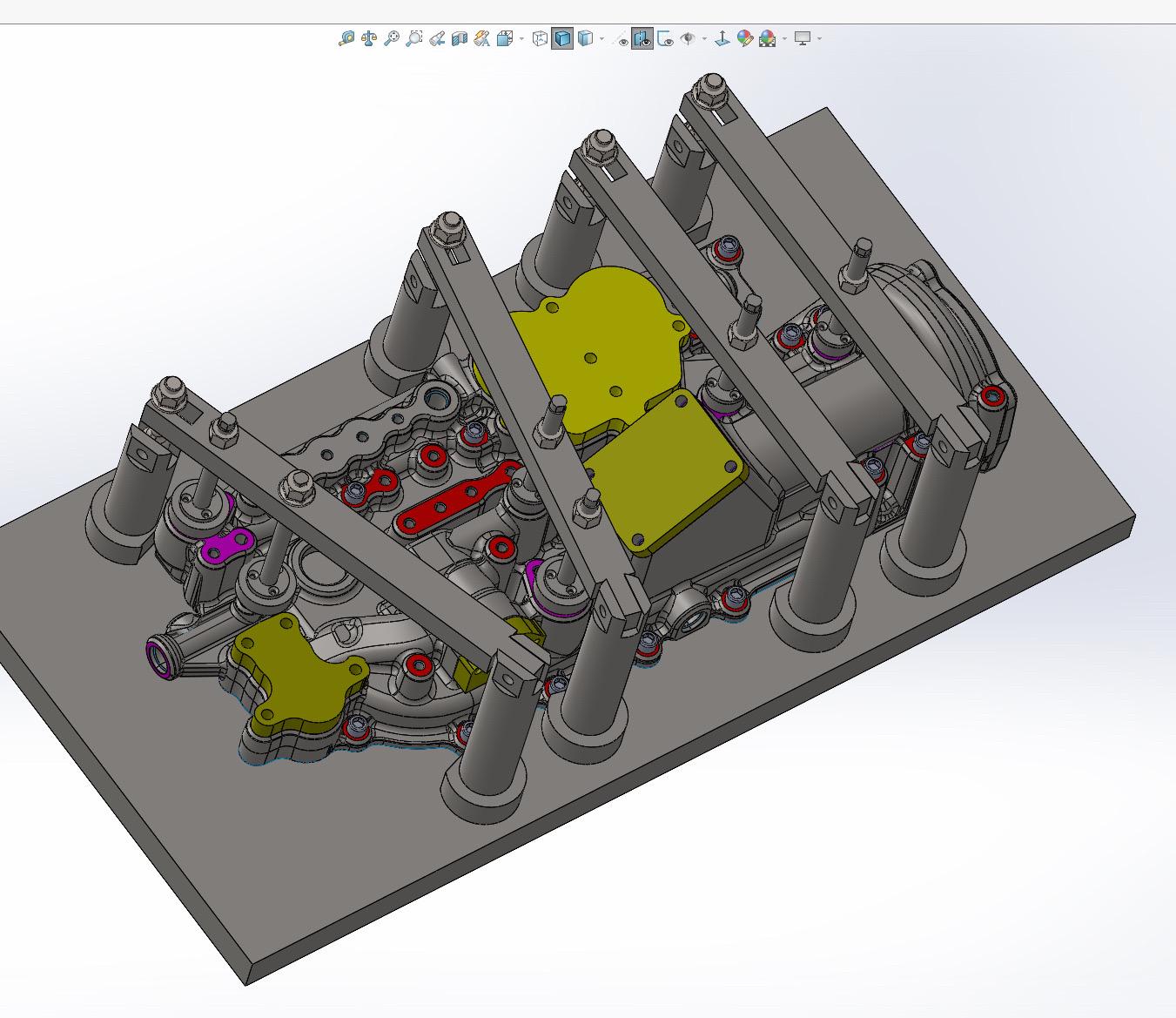
1.3Estructura y clasificación
Publicado por la Organización Internacional de Normalización (ISO), la norma ISO 2768 consta de dos partes principales:
- ISO 2768-1 Cubre las tolerancias generales para dimensiones lineales y angulares. Cuando las dimensiones se muestran en un dibujo técnico sin tolerancias específicas, esta norma aplica automáticamente el grado de tolerancia correspondiente.
- ISO 2768-2 aborda tolerancias generales para características sin indicaciones de tolerancia individuales, como rectitud, planitud, perpendicularidad y excentricidad.
1.4Grados de tolerancia
ISO 2768-1 define cuatro grados de tolerancia para dimensiones lineales y angulares:
- f (bien)
- m (medio)
- c (grueso)
- v (muy grueso)
Estos grados se adaptan a diversas necesidades de fabricación y niveles de precisión.
ISO 2768-2 Introduce tres grados de tolerancias geométricas:
- H (alta precisión)
- K (precisión media)
- L (baja precisión)
Se utilizan para clasificar la precisión de las características de forma y posición.
1.5Por qué es importante la norma ISO 2768
La norma ISO 2768 se utiliza ampliamente en sectores como la ingeniería mecánica, el mecanizado CNC y la fabricación de metales. Se trata de un enfoque estandarizado:
- Reduce la falta de comunicación entre los equipos de diseño y fabricación.
- Previene problemas de producción causados por una mala interpretación de la tolerancia.
- Garantiza la consistencia y confiabilidad del producto.
- Facilita la colaboración entre fabricantes y clientes globales.
En Alemania, la norma ISO 2768 también se implementa bajo la Norma DIN, apoyando aún más la ejecución uniforme.
1.6Consideraciones sobre la rugosidad de la superficie
Si bien la norma ISO 2768 se centra en las tolerancias dimensionales, también aborda rugosidad de la superficie Mediante la definición de niveles de calidad de acabado, estas clasificaciones ayudan a estandarizar las expectativas en los diferentes métodos de fabricación y garantizan un tratamiento superficial funcional y uniforme.
1.7Tolerancias de ejemplo para piezas de metal mecanizadas por CNC
| Característica | Rango de dimensiones (mm) | Tolerancia (± mm) | Nota |
| Dimensiones lineales | 0,5 – 6 | ±0,05 | Pequeñas características |
| >6 – 30 | ±0,10 | Piezas de uso general | |
| >30 – 120 | ±0,15 | Piezas de tamaño mediano | |
| >120 – 400 | ±0,25 | Grandes características mecanizadas | |
| Diámetro del agujero | ≤6 | ±0,05 | Se requiere alta precisión |
| >6 – 30 | ±0,10 | Para sujetadores estándar | |
| >30 – 100 | ±0,15 | Agujeros de tamaño mediano | |
| Llanura | ≤100 | 0.1 | Planitud de la superficie base |
| >100 | 0.2 | Superficies planas más grandes | |
| Rectitud | ≤100 | 0.1 | Para ejes o características largas |
| >100 | 0.2 | ||
| Perpendicularidad | ≤100 | 0.2 | Entre paredes o piezas acopladas |
| >100 | 0.3 | ||
| Tolerancia de posición | ≤100 | 0.5 | Posición del agujero o característica |
| Redondez / Cilindricidad | ≤50 | 0,1 – 0,2 | Para piezas giratorias o acopladas |
2.0El propósito y la importancia de la norma ISO 2768
2.1¿Por qué se utiliza la norma ISO 2768?
La norma ISO 2768 proporciona un sistema estandarizado de tolerancias generales para dimensiones lineales, dimensiones angulares y ciertas características geométricas. Esto reduce la necesidad de que los diseñadores especifiquen tolerancias individuales para cada característica de un dibujo técnico.
Esto es particularmente beneficioso en conjuntos complejos que involucran múltiples componentes, ya que:
- Ahorra tiempo de diseño
- Reduce la complejidad del dibujo
- Minimiza errores en la interpretación de dibujos técnicos.
Por ejemplo, características críticas como radios externos o alturas de chaflán pueden seguir las tolerancias generales descritas en la norma ISO 2768. Esto simplifica la comunicación entre diseñadores, ingenieros y fabricantes, lo que en última instancia mejora la eficiencia de la fabricación.
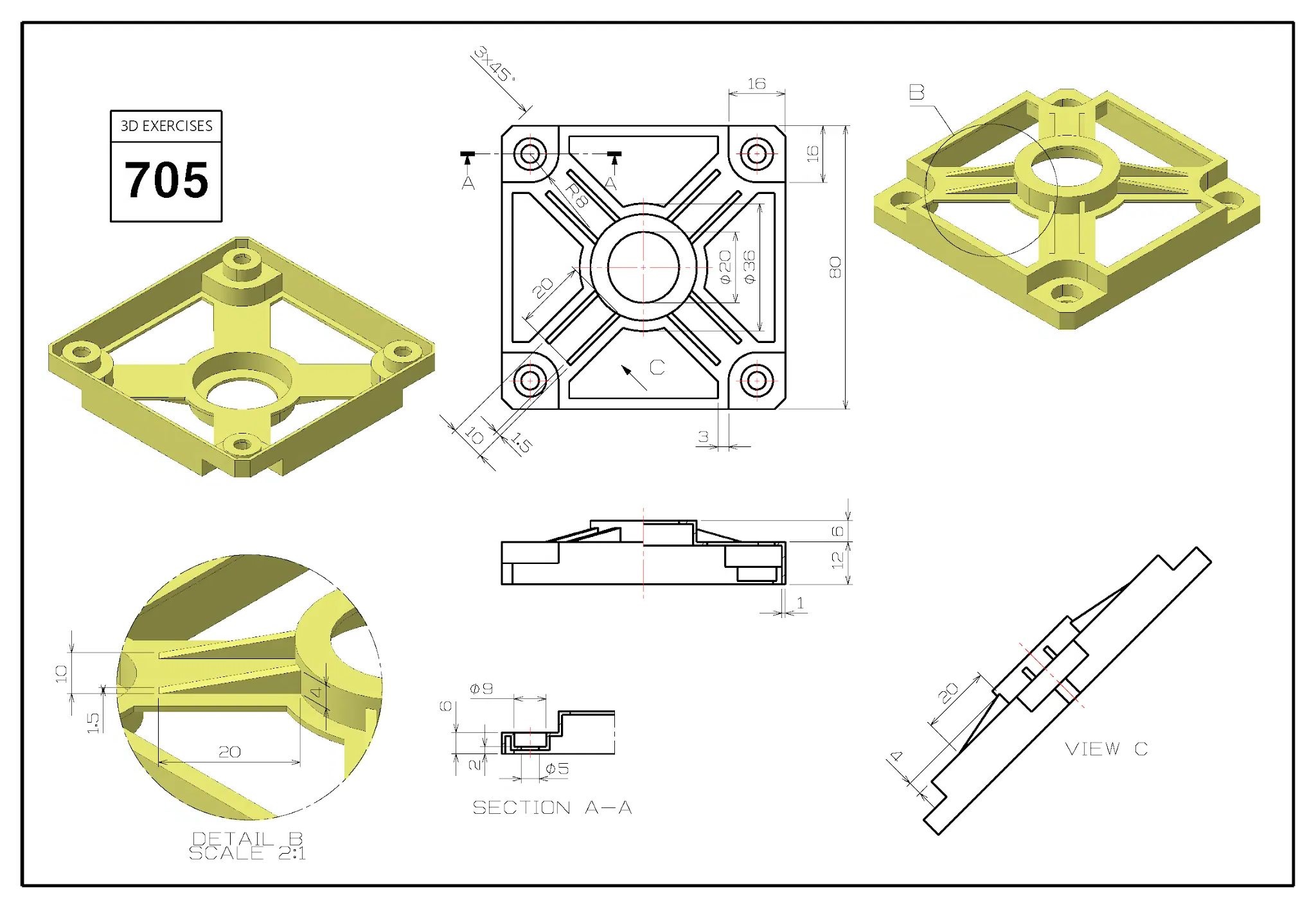
2.2El papel de las tolerancias en la fabricación y el control de calidad
- Definición de desviación aceptable: Las tolerancias especifican cuánto puede variar el tamaño o la geometría de una pieza con respecto al valor nominal, lo que garantiza que la pieza aún cumple con la intención de diseño.
- Garantizar la calidad del montaje: Las tolerancias adecuadas garantizan que las piezas encajen y funcionen correctamente durante el ensamblaje, lo que reduce el riesgo de repetición o falla.
- Control de costes de producción: La aplicación de tolerancias razonables evita el mecanizado excesivo y la sobreingeniería, lo que ayuda a reducir los gastos de fabricación.
- Agilizar la comunicación: Un marco de tolerancia estandarizado ayuda a alinear las expectativas entre diseñadores y fabricantes, minimizando las malas interpretaciones.
- Sin tolerancias claramente definidas, incluso pequeñas variaciones dimensionales pueden provocar un ajuste deficiente, una calidad comprometida o una falla del producto en el campo.
2.3Por qué la norma ISO 2768 es importante en la fabricación moderna
- Simplifica la ingeniería dibujos y mejora la comunicación entre diseñadores, ingenieros y equipos de producción
- Admite consistencia global, garantizando la compatibilidad e intercambiabilidad de componentes producidos en diferentes regiones
- Permite la colaboración internacionalAl proporcionar una comprensión compartida de los requisitos de tolerancia, eliminando la confusión causada por las normas locales.
- Mejora la calidad y confiabilidad del producto.Al reducir los errores de fabricación y respaldar un rendimiento constante en todas las ejecuciones de producción.
La norma ISO 2768 es una piedra angular de la fabricación eficiente y estandarizada, que ofrece un equilibrio entre precisión, practicidad e interoperabilidad global.
2.4Cómo seleccionar el grado de tolerancia ISO 2768 correcto
La elección del grado de tolerancia ISO 2768 adecuado requiere una cuidadosa consideración de varios factores clave. Seleccionar el grado correcto garantiza un equilibrio entre la funcionalidad del producto, el coste de fabricación y la viabilidad.
| Factor | Descripción |
| Función de la pieza | Los componentes críticos, como los de motores o dispositivos médicos, requieren tolerancias finas. Las piezas no críticas pueden usar tolerancias gruesas. |
| Control de costos | Las tolerancias más estrictas aumentan la complejidad y el coste del mecanizado. Unas tolerancias razonables ayudan a reducir los gastos de fabricación. |
| Complejidad del diseño | Las geometrías complejas suelen requerir tolerancias más precisas para garantizar la precisión. Las piezas más sencillas pueden tolerar grados más flexibles. |
| Propiedades del material | Ciertos materiales exigen un control más estricto para mantener la estabilidad y el rendimiento durante el procesamiento. |
Para la mayoría de las aplicaciones de ingeniería general, el medio (m) El grado de tolerancia se considera un valor predeterminado en la práctica: logra un buen equilibrio entre precisión y rentabilidad.
La siguiente tabla ofrece orientación sobre casos de uso típicos y describe los estándares de tolerancia recomendados (ISO 2768 y ISO 286) según la función de la pieza y los requisitos de la aplicación:
| Solicitud | Descripción | Clase de tolerancia ISO 2768 | Grado ISO 286 | Razón para la elección de la tolerancia |
| Piezas mecanizadas de precisión | Piezas de alta precisión para uso aeroespacial, automotriz o médico. | Bien | IT6 o más apretado | Garantiza una desviación mínima en el tamaño y el ajuste para ensamblajes de alta precisión. |
| Piezas mecánicas intercambiables | Piezas reemplazables como engranajes, cojinetes, sujetadores en conjuntos. | Bien | IT7 o más estricto | Admite consistencia dimensional y ajustes estandarizados entre componentes. |
| Conjuntos mecánicos generales | Piezas de maquinaria estándar, como carcasas, bastidores o soportes. | Medio | – | Equilibra el coste de fabricación y la precisión dimensional. |
| Grandes estructuras fabricadas | Estructuras soldadas o ensambladas como marcos, vigas y placas. | Medio | – | Adecuado para piezas más grandes donde las tolerancias estrictas no son prácticas. |
| Componentes de plástico | Piezas de plástico moldeadas o mecanizadas con requisitos de tolerancia moderados. | Medio | IT8 o más suelto | Se adapta a la contracción del material y a una menor estabilidad dimensional. |
| Ejes y agujeros para piezas giratorias | Elementos rotativos que requieren ajustes y alineación funcionales. | Bien | IT6–IT7 | Garantiza ajustes circulares precisos y mantiene el equilibrio rotacional. |
| Piezas de chapa metálica | Componentes doblados o perforados, como paneles, carcasas o cubiertas. | Medio | – | Apropiado para métodos de conformado de láminas con variabilidad natural. |
| Cajas y envolventes eléctricas | Cubiertas que no son de precisión para sistemas eléctricos o electrónicos. | Medio | – | Proporciona un ajuste suficiente para el montaje sin un coste de fabricación excesivo. |
| Componentes de productos de consumo | Piezas de plástico o de metales ligeros en aparatos electrónicos o electrodomésticos. | Medio | IT8 | Prioriza la capacidad de fabricación y el ajuste cosmético por encima de las tolerancias estrictas. |
Aplicación de las tolerancias ISO 2768 e ISO 286 en ingeniería
2.5¿Qué significa ISO 2768-mK?
ISO 2768-mK Se refiere a una combinación específica de grados de tolerancia general según la norma ISO 2768. Se utiliza comúnmente en entornos de fabricación que requieren una precisión dimensional moderada (normalmente en el rango milimétrico) junto con un control estándar de las características geométricas.
2.6Desglosando “mK”
“m” — Grado de tolerancia media
La carta "metro" significa medio, que es uno de los cuatro grados de tolerancia dimensional lineal y angular definidos en la norma ISO 2768-1:
- F- bien
- metro- medio
- do– grueso
- v– muy grueso
El grado medio permite una variación dimensional moderada, adecuado para la mayoría de aplicaciones de ingeniería general donde las tolerancias estrictas no son críticas pero la consistencia sigue siendo esencial.
“K” — Grado de tolerancia geométrica
La "K" se refiere a una clase de tolerancia geométrica, según se define en la norma ISO 2768-2. Se aplica a las tolerancias de forma y posición de características como:
- Rectitud
- Llanura
- Perpendicularidad
- Sin
El K La calificación representa una nivel medio de control geométrico, ofreciendo un enfoque equilibrado entre precisión y practicidad de fabricación.
En resumen, ISO 2768-mK Es una especificación ampliamente utilizada para componentes que requieren precisión dimensional moderada y control geométrico estándar. Simplifica los dibujos técnicos, manteniendo la calidad esencial y la integridad funcional durante la fabricación.
3.0ISO 2768-1: Tolerancias generales para dimensiones lineales y angulares
ISO 2768-1 Simplifica los dibujos técnicos al definir tolerancias generales para dimensiones lineales y angulares, eliminando la necesidad de especificar tolerancias individuales para cada elemento. Resulta especialmente útil para piezas mecanizadas estándar donde no se indican explícitamente tolerancias específicas.
Esta norma se aplica a:
- Dimensiones externas e internas
- Distancias de paso
- Diámetros y radios
- Espaciado de agujeros y distancias a los bordes
- Radios externos y alturas de chaflán (por ejemplo, bordes rotos)
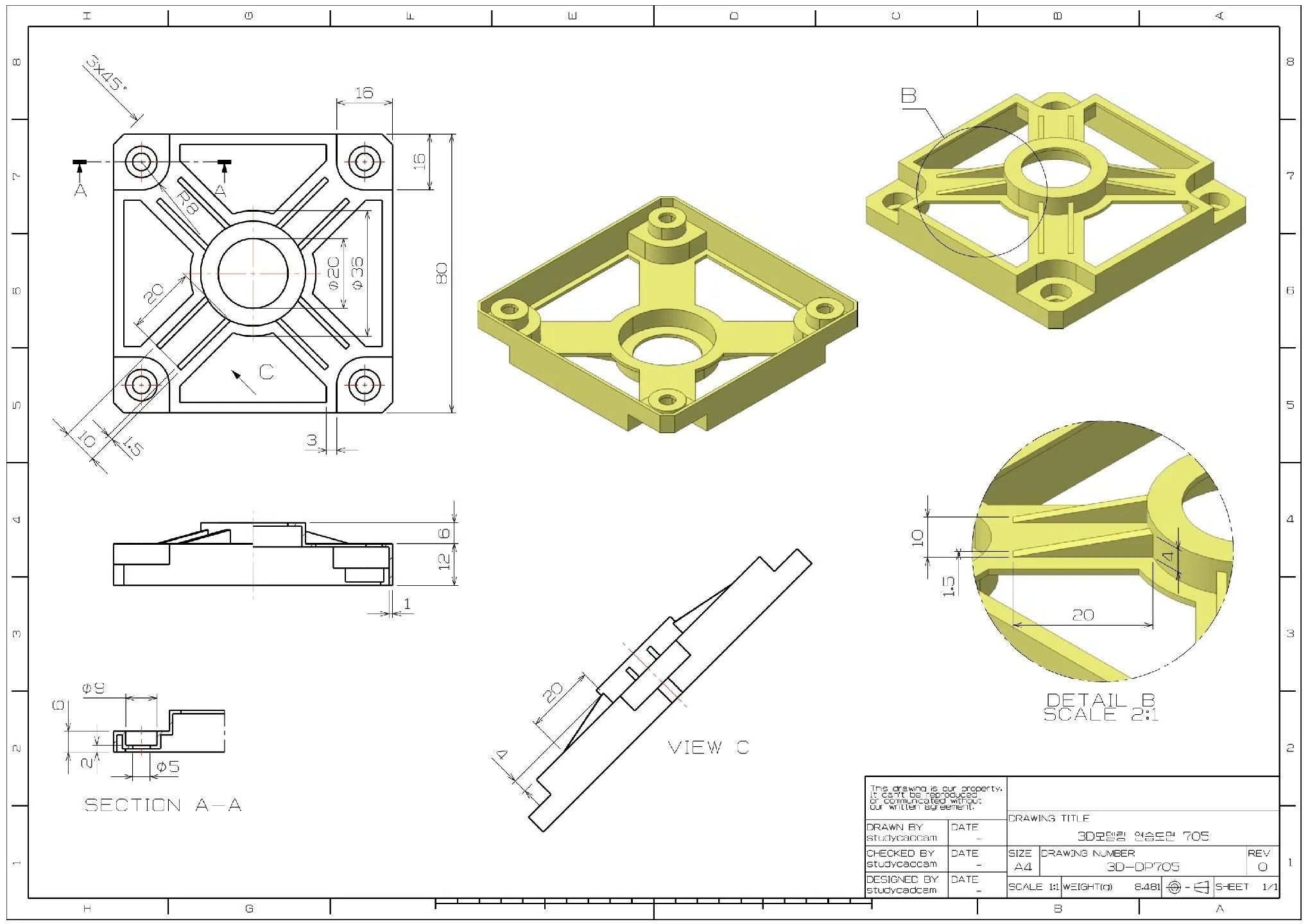
3.1Clases de tolerancia y sus aplicaciones
La norma ISO 2768-1 define cuatro clases de tolerancia según el nivel de precisión requerido. La selección de la clase adecuada depende de los requisitos funcionales, la capacidad de fabricación y el coste.
| Clase de tolerancia | Descripción | Aplicaciones típicas |
| f (bien) | Tolerancia de alta precisión | Componentes mecanizados con precisión, instrumentación |
| m (medio) | Tolerancia estándar de propósito general | Piezas mecánicas con requisitos de precisión moderados |
| c (grueso) | Para componentes de baja precisión | Piezas estructurales, conjuntos soldados |
| v (muy grueso) | Para mecanizado de desbaste o inicial | Perfiles cortados a la llama, elementos estructurales en bruto |
El medio (m) Esta clase se utiliza comúnmente para aplicaciones de ingeniería general y ofrece un buen equilibrio entre precisión y rentabilidad.
3.2Tabla 1 Tolerancias generales para dimensiones lineales (Unidad: mm)
| Rango de longitud nominal (mm) | f (bien) | m (medio) | c (grueso) | v (muy grueso) |
| 0,5 hasta 3 | ±0,05 | ±0,1 | ±0,2 | – |
| Más de 3 hasta 6 | ±0,05 | ±0,1 | ±0,3 | ±0,5 |
| Más de 6 hasta 30 | ±0,1 | ±0,2 | ±0,5 | ±1.0 |
| Más de 30 hasta 120 | ±0,15 | ±0,3 | ±0,8 | ±1,5 |
| Más de 120 hasta 400 | ±0,2 | ±0,5 | ±1,2 | ±2,5 |
| Más de 400 hasta 1000 | ±0,3 | ±0,8 | ±2.0 | ±4.0 |
| Más de 1000 hasta 2000 | ±0,5 | ±1,2 | ±3.0 | ±6.0 |
| Más de 2000 hasta 4000 | – | ±2.0 | ±4.0 | ±8.0 |
Basado en la clase de tolerancia y el rango de longitud nominal — Referencia: ISO 2768-1
3.3Tabla 2 – Radios externos y alturas de chaflán
| Desviaciones admisibles en mm para rangos en longitudes nominales | Designación de clase de tolerancia (descripción) | |||
| f (bien) | m (medio) | c (grueso) | v (muy grueso) | |
| 0,5 hasta 3 | ±02 | ±0,2 | ±0,4 | ±0,4 |
| más de 3 hasta 6 | ±0,5 | ±0,5 | ±1.0 | ±1.0 |
| más de 6 | ±1.0 | ±1.0 | ±2.0 | ±2.0 |
NOTA: Asimismo, las tolerancias inferiores a 0,5 mm deberán indicarse junto a la dimensión correspondiente.
3.4Tabla 3 – Dimensiones angulares
| Desviaciones admisibles en mm para rangos en longitudes nominales | Designación de clase de tolerancia (descripción) | |||
| f (bien) | m (medio) | c (grueso) | v (muy grueso) | |
| hasta 10 | ±1º | ±1º | ±1º30′ | ±3º |
| más de 10 hasta 50 | ±0º30′ | ±0º30′ | ±1º | ±2º |
| más de 50 hasta 120 | ±0º20′ | ±0º20′ | ±0º30′ | ±1º |
| más de 120 hasta 400 | ±0º10′ | ±0º10′ | ±0º15′ | ±0º30′ |
| más de 400 | ±0º5′ | ±0º5′ | ±0º10′ | ±0º20′ |
La Tabla 3 define las tolerancias generales para ángulos/dimensiones angulares. Cabe destacar que las unidades de tolerancia para ángulos son grados y minutos.
3.5Aplicación de la norma ISO 2768-1
La norma ISO 2768-1 se aplica a:
Dimensiones lineales sin indicaciones de tolerancia individuales, como por ejemplo:
- Longitudes externas e internas
- Anchos, alturas y espesores
- Diámetros de agujeros y diámetros de ejes
Dimensiones angulares, incluyendo:
- Ángulos entre superficies
- Chaflanes y biseles
Características producidas por procesos de fabricación comunes, tales como:
- Mecanizado
- Corte
- Doblado
- Estampado
- Montaje y soldadura
Esta norma se aplica normalmente a piezas de metal y plástico en dibujos de ingeniería mecánica general.
4.0ISO 2768-2: Tolerancias geométricas generales
ISO 2768-2 Establece tolerancias geométricas generales para características como rectitud, llanura, redondez, y cilindricidad, simplificando los dibujos al evitar marcas de tolerancia detalladas.
Se aplica principalmente a piezas fabricadas mediante procesos de eliminación de material (por ejemplo, fresado, torneado) y clasifica las tolerancias en tres niveles:
- H– Alta precisión
- K– Precisión media
- Yo– Baja precisión
A diferencia de los estándares de tolerancia dimensional (como ISO 286), ISO 2768-2 controla la geometría utilizando zonas de tolerancia—áreas entre dos planos o superficies paralelas donde debe situarse la característica real. Este método tiene en cuenta la rugosidad superficial y pequeñas variaciones durante la medición, pero mantiene las desviaciones dentro de límites aceptables.
La norma proporciona tablas que cubren las tolerancias para:
- Rectitud y planitud
- Circularidad y cilindricidad
- Perpendicularidad, angularidad, paralelismo
- Agotamiento y agotamiento total
Cada tolerancia depende del tamaño nominal de la característica y de la clase de precisión elegida (H, K o L).
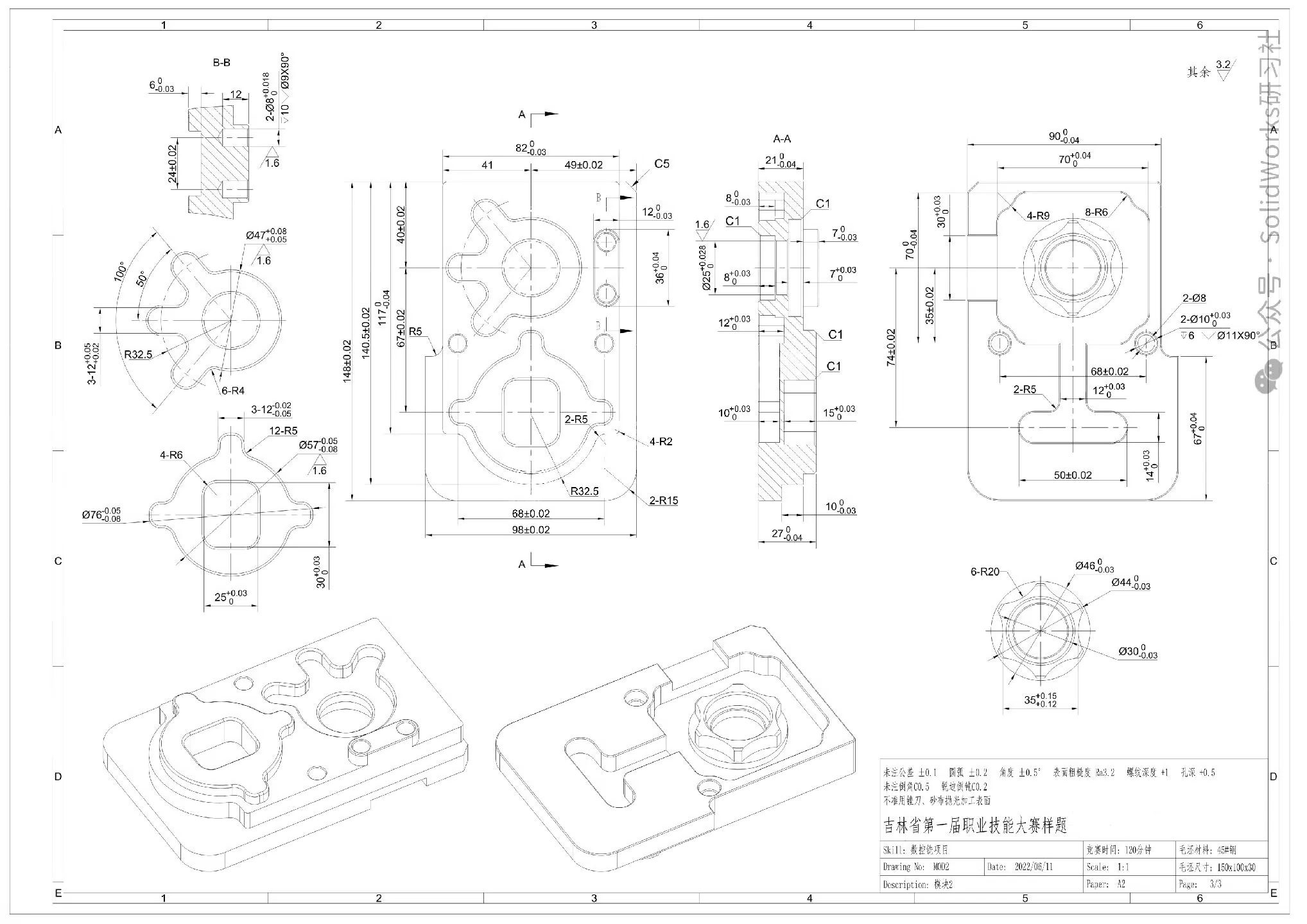
4.1Tabla 4 – Tolerancias generales de rectitud y planitud
| Rangos de longitudes nominales en mm | Clase de tolerancia | ||
| H | K | Yo | |
| hasta 10 | 0.02 | 0.05 | 0.1 |
| por encima de 10 a 30 | 0.05 | 0.1 | 0.2 |
| por encima de 30 a 100 | 0.1 | 0.2 | 0.4 |
| por encima de 100 a 300 | 0.2 | 0.4 | 0.8 |
| por encima de 300 a 1000 | 0.3 | 0.6 | 1.2 |
| por encima de 1000 a 3000 | 0.4 | 0.8 | 1.6 |
La Tabla 4 define las clases de tolerancia de planitud y rectitud. Retomando el ejemplo del compresor, la superficie de contacto entre el compresor y la base, así como la superficie de contacto entre la base y el motor, son importantes, por lo que sus tolerancias de planitud se especifican en los planos. La tolerancia de rectitud se refiere al grado de variación dentro de una línea recta específica en esa superficie. Otro uso es considerar el grado de flexión o torsión del eje de una pieza.
4.2Tabla 5 – Tolerancias generales de perpendicularidad
| Rangos de longitudes nominales en mm | Clase de tolerancia | ||
| H | K | Yo | |
| hasta 100 | 0.2 | 0.4 | 0.6 |
| por encima de 100 a 300 | 0.3 | 0.6 | 1.0 |
| por encima de 300 a 1000 | 0.4 | 0.8 | 1.5 |
| por encima de 1000 a 3000 | 0.5 | 1.0 | 2.0 |
La distancia vertical se expresa en milímetros. Al igual que la planitud, definimos la separación entre dos planos como menor que la desviación permitida en la Tabla 5. Nuestro objetivo es lograr un ángulo de 90 grados.
4.3Tabla 6 – Tolerancias generales de simetría
| Rangos de longitudes nominales en mm | Clase de tolerancia | ||
| H | K | Yo | |
| hasta 100 | 0.5 | 0.6 | 0.6 |
| por encima de 100 a 300 | 0.5 | 0.6 | 1.0 |
| por encima de 300 a 1000 | 0.5 | 0.8 | 1.5 |
| por encima de 1000 a 3000 | 0.5 | 1.0 | 2.0 |
En la tabla 6 se muestran las tolerancias de simetría de la pieza en el plano de referencia.
4.4Tabla 7 – Tolerancias generales en el descentramiento circular
| Rangos de longitudes nominales en mm | Clase de tolerancia | ||
| H | K | Yo | |
| 0.1 | 0.2 | 0.5 | |
Esta tolerancia universal permite al diseñador elegir el nivel de tolerancia que mejor se adapte a los requisitos. Por ejemplo, si la pieza se va a utilizar en un proyecto CNC con requisitos de tolerancia estrictos, sería conveniente elegir un rango de tolerancia menor. Por el contrario, si se fabrican piezas en grandes volúmenes para aplicaciones con tolerancias más bajas, un rango de tolerancia más amplio resultará más rentable.
4.5Aplicaciones comunes de la norma ISO 2768-2
| Área de aplicación | Descripción | Ejemplo |
| Fabricación de chapa metálica | Control geométrico para piezas sin marcas de tolerancia específicas | Planitud, rectitud, perpendicularidad en piezas de chapa metálica |
| Componentes mecánicos | Control de relaciones geométricas en superficies de acoplamiento o ensamblaje | Descentramiento axial de ejes de engranajes, simetría de chaveteros |
| Estructuras soldadas | Consistencia de forma y posición de grandes conjuntos soldados | Paralelismo y perpendicularidad de marcos soldados |
| Piezas mecanizadas (no críticas) | Control de formulario básico donde no se requiere alta precisión | Control de geometría para calzas, soportes y bridas |
| Moldeo por inyección/fundición | Control geométrico básico de piezas moldeadas | Planitud, simetría y posicionamiento de las carcasas |
| Guía de montaje o superficies de contacto | Garantizar la precisión posicional básica entre las piezas | Posicionamiento de pasadores guía, orificios para pasadores |
| Superficies de referencia o auxiliares no funcionales | Controlar la apariencia o la calidad del ensamblaje en lugar de la función | Rectitud de las paredes laterales de la carcasa, perpendicularidad de las piezas decorativas |
5.0Descargar Normas Oficiales de Tolerancia ISO 2768:
Norma de tolerancia general ISO 2768-1 (Dimensiones lineales y angulares) .pdf
Norma de tolerancia general ISO 2768-2 (Tolerancias geométricas) .pdf
6.0Resumen
La norma ISO 2768 define tolerancias generales ampliamente utilizadas en la fabricación para simplificar el diseño y la producción.
- ISO 2768-1 Cubre dimensiones lineales y angulares con clases de tolerancia generales.
- ISO 2768-2 garantiza la precisión de las características geométricas como rectitud, perpendicularidad y simetría, fundamentales para el correcto ensamblaje de las piezas.
Al seleccionar estándares, considere:
- La precisión dimensional requerida del producto
- La necesidad de mantener relaciones geométricas entre las piezas
En la práctica, Las normas ISO 2768-1 e ISO 2768-2 a menudo se combinanPor ejemplo, los componentes de motores de automóviles suelen requerir la precisión dimensional de la norma ISO 2768-1, junto con el control geométrico de la norma ISO 2768-2, para garantizar el rendimiento general y la calidad del ensamblaje.
- La norma ISO 2768-2 se utiliza junto con la norma ISO 2768-1 para formar un esquema de tolerancia general completo.
- Reduce las marcas de tolerancia redundantes, mejorando la claridad del dibujo.
- Para el procesamiento CNC y de moldes que requieren una precisión geométrica moderada, el K (medio)La clase de tolerancia se selecciona comúnmente.
7.0Preguntas frecuentes sobre la norma ISO 2768
¿Cuál es la diferencia entre ISO 2768 e ISO 286?
La norma ISO 2768 especifica tolerancias generales para dimensiones lineales y angulares, aplicables a diversas piezas; mientras que la norma ISO 286 se centra en tolerancias específicas para ajustes cilíndricos, como ejes y agujeros, especialmente para ajustes de interferencia o con holgura. Por lo tanto, la norma ISO 286 es adecuada para ajustes precisos, mientras que la norma ISO 2768 se utiliza para un control de tolerancia más general.
¿En qué se diferencia la norma ISO 2768 de la ASME Y14.5?
ISO 2768 es una norma internacional que proporciona grados de tolerancia generales; ASME Y14.5 Es una norma estadounidense centrada en GD&T (Dimensionamiento y tolerancia geométrica) y que abarca tolerancias geométricas más complejas, como rectitud, planitud, etc. La norma ISO 2768 es adecuada para tolerancias dimensionales generales, mientras que la ASME Y14.5 se aplica a requisitos de diseño muy detallados y complejos.
¿Cuál es la relación entre las normas ISO 2768 y DIN?
Las normas DIN se utilizan ampliamente en Alemania y Europa, al igual que la ISO 2768, pero pueden incluir límites de tolerancia más estrictos o específicos para cada proceso (p. ej., para chapa metálica y moldeo por inyección). DIN también proporciona una guía de aplicación más detallada para satisfacer las necesidades de fabricación europeas.
¿Cómo realizar una auditoría de cumplimiento de la norma ISO 2768?
La auditoría de cumplimiento requiere la revisión sistemática de los procesos de fabricación y los planos para verificar que las tolerancias lineales y angulares cumplan con la norma ISO 2768, especialmente los grados de tolerancia (H, K, L) y las características geométricas (como rectitud, planitud y perpendicularidad). Es fundamental que las anotaciones de tolerancia en los planos coincidan con los procesos de fabricación para garantizar que las piezas cumplan las especificaciones.
¿Cuáles son los errores más comunes en las auditorías de cumplimiento de la norma ISO 2768?
Los principales problemas incluyen la comprensión errónea o la aplicación incorrecta de las tolerancias de dibujo, la omisión de las tolerancias para características críticas (como radios externos y chaflanes) y la ejecución incorrecta de los grados de tolerancia. La falta de comprensión de la aplicabilidad del proceso de fabricación también puede conducir al incumplimiento.
¿Cómo obtener la certificación ISO 2768?
El proceso de certificación incluye:
- Comprender y dominar los requisitos de la norma ISO 2768;
- Realizar un análisis de brechas para identificar diferencias entre los procesos actuales y el estándar;
- Implementar los cambios necesarios, incluidas actualizaciones de dibujos, grados de tolerancia y ajustes de procesos;
- Realizar auditorías internas para verificar la efectividad de los cambios y la concientización del equipo;
- Selección de un organismo de certificación acreditado por la ISO para auditoría externa;
- Obtener la certificación y mantener el cumplimiento continuo a través de revisiones y mejoras periódicas.
Referencias
https://www.fictiv.com/articles/iso-2768-an-international-standard
https://xometry.pro/en/articles/standard-tolerances-manufacturing/



